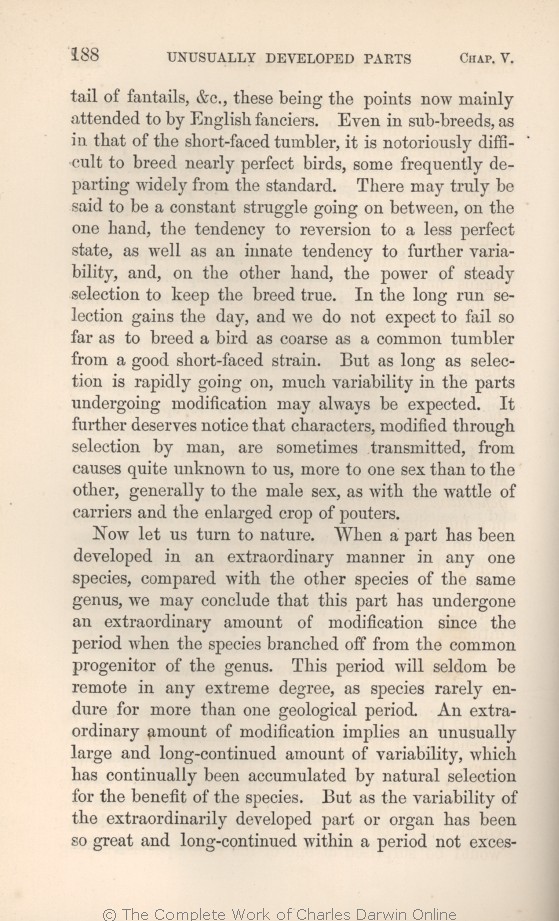in the carriage and tail of
..| ..... 1869 1872 | | our 1859 1860 1861 1866 |
| ..... 1869 | | the 1859 1860 1861 1866 1872 |
| sub-breeds, 1859 1860 1861 1866 1869 | | same sub-breed, 1872 |
| that of the 1869 1872 |
| the 1859 1860 1861 1866 |
| tumbler, 1859 1860 1869 1872 | | tumblers, 1861 1866 |
| ..... 1869 1872 | | them 1859 1860 1861 1866 |
| perfect birds, some frequently departing 1869 |
| to perfection, and frequently individuals are born which depart 1859 1860 1861 1866 |
| perfect birds, many departing 1872 |
| truly be 1869 1872 | | be truly 1859 1860 1861 1866 |
| perfect 1869 1872 | | modified 1859 1860 1861 1866 |
| further variability, 1869 |
| further variability of all kinds, 1859 1860 1861 1866 |
| new variations, 1872 |
| far 1859 1860 1861 1866 1869 | | completely 1872 |
| a 1859 1860 1861 1866 1869 | a 1872 |
| from 1859 1860 1861 1866 1869 | | pigeon from 1872 |
| OMIT 1869 1872 |
| there may always be expected to be 1859 1860 1861 1866 |
| parts 1869 1872 | | structure 1859 1860 1861 1866 |
| modification may always be expected. 1869 1872 |
| modification. 1859 1860 1861 1866 |
| characters, modified through selection by man, are sometimes transmitted, 1869 |
| these variable characters, produced by man's selection, sometimes become attached, 1859 1860 1861 1866 |
|
Now let us turn to nature. When a part has been developed in an extraordinary manner in any one species, compared with the other species of the same genus, we may conclude that this part has undergone an extraordinary amount of
modification | modification 1860 1861 1866 1869 1872 | | modification, 1859 |
| species 1859 1860 1861 1866 1869 | | several species 1872 |
| ..... 1869 1872 | | very 1859 1860 1861 1866 |
| extraordinarily developed 1861 1866 1869 1872 | | extraordinarily-developed 1859 1860 |
| exces- sively 1869 | | excessively 1859 1860 1861 1866 1872 |
|









